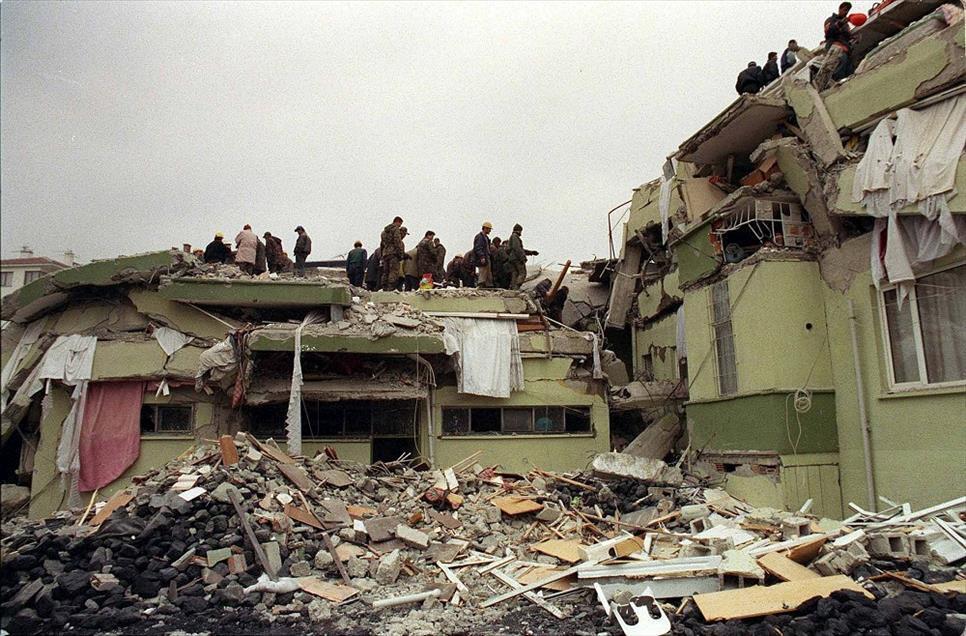Victims recall deadly 1999 quake in northwestern Düzce
ANKARA-Anadolu Agency

Although they say that time heals all wounds, Seyfullah Uzun is still haunted by the 1999 earthquake in Düzce province in northwestern Turkey, where he was lucky enough to escape death with a broken arm and ribs.
On Nov. 12, 1999, Düzce was rocked by a 7.1-magnitude earthquake which lasted 30 seconds, killing 710 people and injuring 2,679.
“It's actually quite difficult to explain how one's life can be turned upside down within a matter of seconds. I returned home after work and was planning to watch TV. Then came this earthquake which almost left me dead,” said 53-year-old Uzun, who works as a repairman.
“I found myself under rubble and of course in great pain,” he said.
“Now that I think about it, the pain I felt in my chest and arms was nothing compared to the pain of those whose loved ones died.”
He said he was lucky that the building he lived in leaned towards the right before collapsing, which was a “miracle,” as nearly all of its tenants would have lost their lives if it came down in a perpendicular manner.
Referring to the deadly earthquake of Aug. 17, 1999 in Turkey's northwestern city of Izmit which killed 18,373 people and injured 23,781 with its 7.6 magnitude according to official figures from the Disaster and Emergency Management Authority (AFAD), he continued:
“I left Istanbul a couple days before and luckily dodged it. But I didn't know the worst was yet to come for me. In my opinion, it was a lesson well learned that one cannot escape fate.”
Uzun, whose right arm still does not fully function due to the injuries he suffered from the quake, said he still has nightmares about that day and is irreparably traumatized.
“I sometimes find myself waking up at night seeing buildings collapsing on me. I believe that only those who had the same experience can understand me. Even tiny vibrations remind me of the terrifying experience,” he said.
Merve Kıran, 32, said she was cooking when the earthquake struck the province and was “paralyzed” out of fear as there was nothing she could do.
“I couldn't even leave the kitchen while the whole building was shaking like a leaf,” she said. “Mother nature demonstrated its force in such a strong manner that I was simply chilled to the bone.”
It was not until Kıran left her house that she realized how much damage the earthquake had inflicted on the province as there were “scores of buildings collapsed to rubble.”
“I grew up in Düzce, so I was familiar with pretty much every part of the province. Seeing my school, where I enjoyed my early childhood, and neighborhood collapsed was an indescribable feeling,” she said.
The earthquake was a turning point in her life as her family decided to leave the province and settle in the central province of Konya, which is "much safer in the sense of earthquake threats" compared to other provinces located on the North Anatolian Fault.
Turkey sits atop one of the most seismically active spots in the world with the North Anatolian Fault and neighboring faults covering most of the country.
Over a dozen earthquakes over magnitude 7 have been recorded since 1939, when eastern Erzincan province was ravaged by a 7.8-magnitude quake. The quake stands as the deadliest incident in Turkey's history, with over 30,000 people killed and 100,000 injured.
















